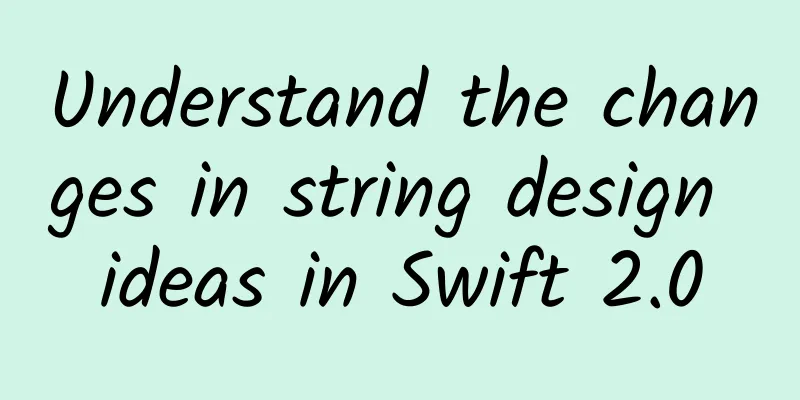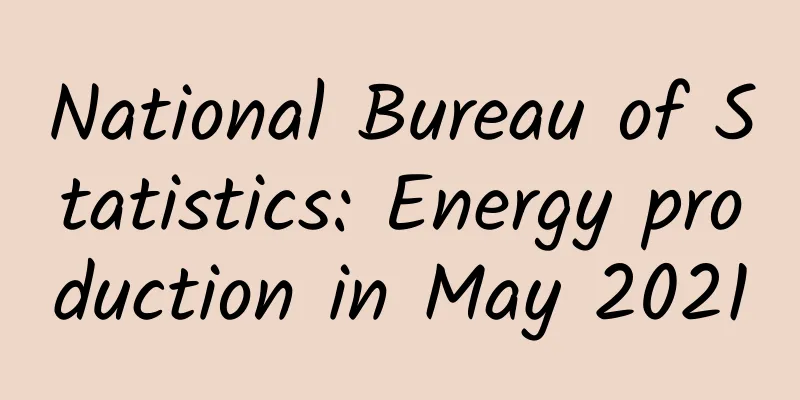What sense of crisis should P2P online lending have?

|
At the end of the year, the development of the P2P industry in 2015 has once again attracted attention, and industry experts are also discussing various possibilities for next year. As a traditional financial practitioner, I have been engaged in Internet finance for three years and have a deep understanding of the development of the P2P industry. When it comes to next year, my biggest hunch is that P2P practitioners should have a strong sense of crisis, but of course, there will also be opportunities. First, let's briefly review the changes in the P2P industry over the past two years. Since the second half of last year, the most significant change in the P2P industry has been polarization. On one side, many platforms have been squeezed and closed down, resulting in various risk events; on the other side, mainstream platforms have received huge amounts of venture capital. This trend continued in 2014, and many companies with backgrounds and resources began to enter the P2P industry. How many P2P companies are there? This is an interesting question. It is generally believed that there are 1,500 to 1,600 P2P companies at present, but this is only the number of online platforms, while offline platforms are even larger. Conservative estimates put the number of offline P2P companies nationwide (some experts believe that these are not P2P) at more than 3,000. The 1,600 online companies are just the tip of the iceberg in terms of both number and scale. It should be said that the P2P industry will continue to be like this in 2015. I think both trends have positive impacts. The collapse of the bankruptcies has sounded the alarm for investors and exposed the potential but neglected risks of the entire industry. The investment of venture capital and the entry of giants have accelerated market education, expanded the entire market, and made the entire P2P industry more and more well-known. In the same Internet finance, Yu'ebao has more than 100 million users, but P2P investment users may only have 1 million. The market prospects of P2P still have a lot of potential, and the expansion of the market is conducive to the development of the entire industry. However, as practitioners in the P2P industry, we should also have a sense of crisis, which comes from three aspects: Crisis 1: How can microfinance business make a profit? Everyone knows that P2P mainly does microfinance business, which is also the expectation of the regulators for P2P. The leaders of the People's Bank of China and the China Banking Regulatory Commission have expressed their hope that P2P can return to microfinance in public speeches more than once. However, many practitioners have an experience that it is not easy for microfinance business to achieve profitability. Commercial banks actually have the ability and technology to do microfinance business, but for the sake of profitability, they have always invested less resources in microfinance. For example, I have a friend who works in a commercial bank and his annual lending target is 50 million. At present, the scale of a single transaction of Xinxin Loan is about 130,000. Within the scope of microfinance, if the target is 130,000 per transaction, then more than 300 transactions will be done in a year, nearly 400 transactions. Considering the research, data collection, interviews, audits, post-loan management and other links, it is impossible to complete such a large business target even if he does not eat or drink or sleep for a year. So how does he do it in a commercial bank? If we do one transaction per quarter, each transaction ranges from 10 million to 20 million, it is easy to meet the target. Banks are assessed based on per capita production capacity, which means that the service model of traditional banks cannot be extended to real small and micro enterprises. As an effective supplement to commercial banks, P2P should serve small and micro enterprises, but the cost of such service is not low. Due to the problems of my country's credit environment, the cost of P2P credit investigation is actually very high. How to reduce operating costs and reduce the comprehensive financing costs of borrowers is one of the crises that P2P companies have to consider. Crisis 2: P2P is affected by the financial environment. P2P is only a small branch in the entire financial environment. my country's broad money M2 has exceeded 116 trillion yuan, close to 120 trillion yuan, but the market size of the entire P2P industry is only about 300 billion yuan. This means that P2P with such a small scale is destined to be affected by changes in the financial environment. One of the changes in the environment is that my country is undergoing financial reforms, and the banking, securities, insurance, and even derivative financial models such as third-party payments are undergoing transformation. Private banks, direct banks, and community banks have become the three directions for the development of banks in the future; the two major changes in the deposit insurance system and asset securitization will promote interest rate marketization. The increase in the operating costs of traditional on-balance sheet business of banks will inevitably prompt them to transform to off-balance sheet business. This is why many banks, especially small and medium-sized banks, are motivated to develop P2P platforms. They are making arrangements for the arrival of interest rate marketization. On the other hand, the reform of my country's securities industry is also being laid out. The recent bull market has had an impact on most P2P companies, but the impact is either large or small. It is said that the IPO registration system is about to be introduced, which will have a new impact on the stock market, and this impact will eventually be transmitted to the P2P industry. Recently, a large amount of funds have been withdrawn from Yu'ebao-type money funds, bank financial products, P2P, etc. and invested in the stock market. This means that the entire Internet finance is actually greatly affected by the macro-economic impact. To give another example, in March this year, the People's Bank of China issued a draft for soliciting opinions on third-party payment, which set a limit on payment, causing shock in the industry. But at that time, the real situation of this incident was that payment was calm, while online lending was anxious. Why? Because once the payment limit was set, many P2P online lending businesses would not be able to operate. On the surface, P2P was not included in the supervision, but in fact, every change in the financial environment would affect P2P, and P2P was extremely sensitive to financial supervision. Crisis 3: How to choose the business model of P2P? Different business models have different advantages and disadvantages. The model chosen by the platform must be well matched with its own resources. In the past, people liked to divide them into online, offline, and O2O. However, with the birth of new models, this division must also be adjusted. According to the way of obtaining borrowers, P2P can be roughly divided into four types. The first is the model of obtaining borrowers online, the second is to obtain borrowers through offline stores, and the third is to have the information of borrowers, such as factoring, financial leasing, pawning, small loans, guarantees, supply chain finance, etc. The fourth is to outsource borrowers and only serve as a channel for funds. Among the four models, offline stores and fund channels are the business models currently preferred by P2P companies. Offline outlets are subject to China's credit environment and are a last resort. The advantage of this model is that it is relatively easy to control risks, but the cost is very high. If there is a requirement for scale expansion, new outlets must be continuously added. This is actually the old way of commercial banks. With the popularization of the Internet and the development of credit, this model may be changed by the efficiency of the Internet, which is also a crisis. Relatively speaking, the fund channel model is more in line with the characteristics of the Internet, that is, users are king and accounts are king. At present, venture capital prefers the fund channel model when investing in P2P, because this model is easy to attract customers in a short period of time, expand the scale rapidly, and the company itself is also a light asset company. However, this model can only partially intervene in risk control or not intervene at all. Once a large-scale overdue risk event occurs, the platform itself may not be fully prepared to deal with it in the first time. What's more interesting is that the channel model is very characteristic of the Internet. The Internet has a 721 rule, that is, the industry leader obtains 70% of the market share, the second place obtains 20% of the market share, and the others add up to 10% of the market share. P2P with a network model is destined to flourish, and the channel model may develop in the future in accordance with the 731 rule of the Internet. From the perspective of the business models of offline outlets and funding channels, we can find some interesting phenomena. Although P2P is Internet finance, it is threatened by the Internet and finance respectively. If the offline is too heavy, it may not keep up with the efficiency and speed of the Internet; but if it is too light in assets and has the attributes of the Internet, it may be threatened by the financial attributes due to inadequate risk control. P2P started from the Internet and returned to finance, which means that it must have the characteristics of the Internet but cannot give up the essence of finance. Financial risks are lagging, and we must be in awe of the business we are engaged in every day. I personally advocate the concept of fair finance, which means that small, medium and micro enterprises should have fair opportunities to enjoy financial services. This fairness also includes various commercial institutions engaged in financial business, because only profitable business models can be developed sustainably and truly help our small and micro enterprises. After talking about the possible crises of P2P, let’s talk about ways to break the deadlock and see how to deal with and change these crises? 1. Standardize development and maintain communication with regulators. P2P and various financial models are interdependent. On the surface, they are not included in the supervision, but in fact, they are highly sensitive to the adjustment of regulatory policies. Therefore, P2P needs to adhere to standardized development and reach a consensus with regulators. In a deeper sense, standardized development is the way to survive. Recently, the stock market has been bullish, and many P2P investors have turned to the stock market. Some companies that split the bonds, mismatched the maturity, borrowed new money to repay old debts, and intervened in liquidity immediately broke out risk events due to the outflow of investors' funds. The bottom line of the bottom line of P2P is that it cannot bear the risk of liquidity. 2. Stick to small and micro businesses. Wells Fargo Bank in the United States just surpassed the market value of ICBC in August this year. It has not made a loss in 160 years. The following advantages ensure that it has not made a loss for a long time: First, it insists on doing some high-yield small and micro business, rather than large enterprises; second, its market share in this business remains leading in the market, and it has improved efficiency and reduced costs through some data accumulation; in fact, small and micro enterprises are less sensitive to economic cycles than large enterprises. This is also reflected in the Basel Accord. Therefore, if we want to have a competitive advantage in the development of P2P, we must stick to small and micro businesses. From the beginning to now, according to statistics as of the end of September, the per capita borrower amount of Xinxindai is only 130,000, because we have always adhered to the principle of sticking to the dispersion of small and micro businesses. The cost of small and micro businesses is high, but the marginal cost of serving small and micro businesses is decreasing. With the deepening of understanding of an industry, the marginal cost will decrease. For P2P companies engaged in microfinance business, the current large-scale layout is to wait until the day when the marginal cost decreases. Furthermore, microfinance is actually a very good business. Why? Because microfinance is least affected by economic cycles. China's economic growth is slowing down, and many industries will be affected. However, small and micro enterprises are less sensitive to economic cycles and have strong demand for loans. In fact, it is still a blue ocean. These views are also reflected in the Basel Accord. 3. Adhere to the openness of the platform. One of the important principles of the Internet spirit is the spirit of sharing. Sharing means that it is impossible for one company to complete all things. In the past, both investors and borrowers of P2P needed to develop independently. But after the entry of the big sharks, it had a great impact on the P2P lender side. P2P must be clear about whether its core competitiveness is on the investment side or the borrowing side. The thinking of the P2P platform should be open, grasp its core advantages, and outsource non-core products and businesses to more professional institutions or companies. Xinxindai has also launched bank acceptance bill products, and will launch fund products in the future. Through cooperation with different institutions, we can find their respective advantages and grasp the future development path. As a winner of Toutiao's Qingyun Plan and Baijiahao's Bai+ Plan, the 2019 Baidu Digital Author of the Year, the Baijiahao's Most Popular Author in the Technology Field, the 2019 Sogou Technology and Culture Author, and the 2021 Baijiahao Quarterly Influential Creator, he has won many awards, including the 2013 Sohu Best Industry Media Person, the 2015 China New Media Entrepreneurship Competition Beijing Third Place, the 2015 Guangmang Experience Award, the 2015 China New Media Entrepreneurship Competition Finals Third Place, and the 2018 Baidu Dynamic Annual Powerful Celebrity. |
<<: Interpretation of Huawei's Ren Zhengfei's speech: Can enlightened despotism promote innovation?
>>: Ten years later, China's mobile phone bull market is on the rise
Recommend
What changes have taken place after the new Land Management Law is implemented in 2022? Attached with detailed rules
Since the new Land Management Law was implemented...
After the WeChat bug, did WeChat Work crash again? Tencent apologized: It has been fixed
[[377009]] There was a bug in WeChat yesterday an...
Even if Apple comes, it won’t work. Why is the experience of in-car operating systems far inferior to that of mobile phones?
We are in contact with operating systems all the ...
There is no thunder on typhoon days. Are these two things "incompatible"?
Audit expert: Zhan Mingjin PhD, Chinese Academy o...
Some tips for iOS development
1. In iOS development, when we communicate with p...
A problem that needs to be avoided when using JSONObject
About the author: Bao Xiehao, Xiaomi MIUI departm...
How to do data analysis on WeChat Official Account? Share 6 key points!
In fact, the meaning behind the data is logic and...
Postpartum recovery and postpartum body shaping latest course Ganmin 16 courses
Introduction to the latest course of postpartum r...
Usability issues and optimization of 4 UI elements in iOS
For reference, the thinking mode and even the spi...
The formula for becoming a Tik Tok influencer worth $1 million!
Tik Tok has become more and more popular, and var...
Baidu's 5 major updates to information flow, check out the improvement effect...
Today, I will share with you what product functio...
Brand marketing: brand logo and symbol design
When we want to identify a brand, the fastest way...
2018 WeChat Open Class, what key points should marketers pay attention to?
On January 15, 2018, Zhang Xiaolong 's speech...
AION Y, the "100,000-level technological first-class cabin", is launched at the Shanghai Auto Show with a price starting at 104,600 yuan after subsidies
On April 19, the 2021 (19th) Shanghai Internation...
A new channel for emergency treatment! Drones outperform ambulances in “flash delivery” →
Compiled by: Gong Zixin Out-of-hospital cardiac a...









